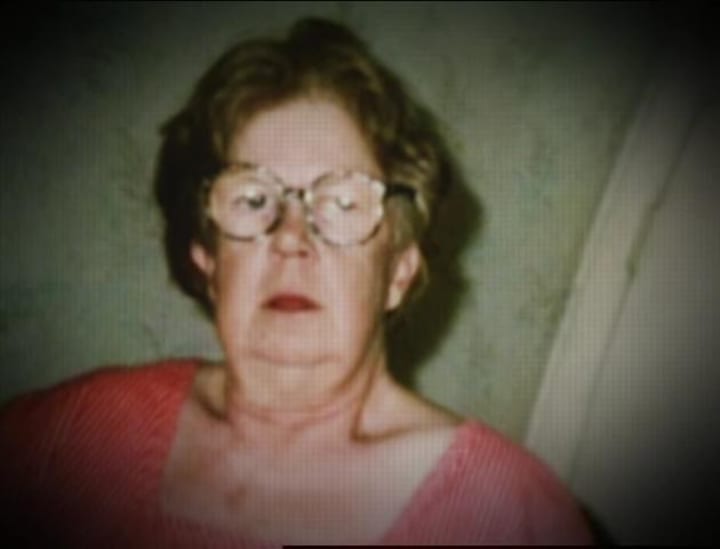The Sad Story of Clarence Elkins: Convicted For a Crime He Never Committed
inside the story of Clarence Elkins

Clarence Arnold Elkins, a 35 year old man and his wife Melinda were living happily in their suburban home in Ohio with their kids until the fateful night of June 7, 1998, when an intruder violently attacked 58-year-old Judy Johnson, who was Clarence Elkins' mother-in-law, and her 6-year-old niece, Brooke Sutton, in Johnson's home located in Barberton, Ohio.
Johnson was sleeping on her living room couch when the attack occurred. The assailant raped, stabbed, and beat her with such brutality that she suffered multiple fractures in her nose, jaw, collarbone, and skull. She was eventually strangled to death.
Brooke, who was sleeping in her grandmother's bed, was awakened by the noise. According to her recollection, she left her bed and went to the kitchen where she saw a man, but his presence frightened her, prompting her to quickly retreat back to her bedroom. There, she concealed herself under the covers and pretended to be asleep. The attacker entered the bedroom and hit Brooke in the face, causing her to lose consciousness. He then proceeded to assault her by beating, sexually, and strangling her, and also inflicted a minor cut to her throat.

Despite the severity of her injuries, Brooke miraculously survived the assault, although she had no recollection of the attack. Several hours later, at around 7:00 A.M, she regained consciousness and called their neighbor, Tonia Brasiel, for help, leaving a message on their phone telling her that her grandmother was dead and she should try and contact her mom.
Brooke walked to the residence of Earl Mann's wife, Tonia Brasiel, the neighbor. She knocked on Brasiel's door, wearing a nightgown and covered in bruises and blood. Brasiel answered the door and informed Brooke that she was in the process of cooking breakfast for her children. She asked Brooke to wait on the porch until she could drive her home, which she eventually did about 45 minutes later. When she was taken to her parents house, they called 911 and reported the crime.
THE INVESTIGATION
During the police investigation, Brooke was questioned about the identity of the attacker. She reportedly told the police that the perpetrator "looked like Uncle Clarence," referring to Clarence Elkins, who was Mrs. Johnson's 35-year-old son-in-law.
The police interpreted this statement as an identification of Elkins as the attacker. Following Brooke's identification of Elkins as a suspect, he was interrogated the morning after the crime. Law enforcement officials also collected biological evidence, including hair samples, from the crime scene and the victims' bodies. Before the trial, mitochondrial DNA testing was conducted on pubic hairs found on the bodies of the victims. The results of these tests excluded Elkins as a possible contributor of the hairs, indicating that he was not the perpetrator.
The only direct evidence presented to the jury was the testimony of Elkins' niece, who had only seen her attacker briefly and in poor lighting conditions and this led to his arrest.
THE CONVICTION
During the trial, the prosecution put forth the theory that Elkins murdered his mother-in-law due to frustration arising from her interference in his troubled marriage to her daughter, Melinda.
However, the case against Elkins relied heavily on the testimony of the 6-year-old eyewitness, as investigators did not find any signs of forced entry or any fingerprints or DNA that could link Elkins to the crime scene. Moreover, hairs recovered from Johnson's body were excluded as having originated from either Elkins or Johnson, further undermining the prosecution's case against him.
He maintained that he had been drinking with friends until around 2:40 a.m. on Sunday morning, a timeline that was supported by Melinda. She testified that she saw Clarence return home and knew that he remained there because she was awake most of the night caring for a sick child. The assault took place sometime between 2:30 a.m. and 5:30 a.m., and Johnson's residence was located over an hour away by car. Elkins's alibi was further corroborated by his neighbors and friends.
Despite the lack of concrete evidence linking him to the crime, Elkins was convicted on June 10, 1999, based on Brooke's identification of him as her attacker. He was found guilty of murder, attempted aggravated murder, two counts of rape by force or threat of force, and felonious assault, and was subsequently sentenced to two life terms in prison.
CLARENCE FIGHTS FOR HIS INNOCENCE
Clarence's attorney re-interviewed Brooke and she recanted her testimony and said she wasn't sure if it was her uncle she saw. They filed for an appeal based on this but it was denied by the judge. After an unsuccessful appeal, Elkins and his wife decided to request a retesting of the evidence for DNA. The court granted Melinda access to the DNA recovered from the crime scene but required her to cover the costs of the testing.
Melinda raised nearly $40,000 on her own and then sought assistance from the Ohio Innocence Project, which secured the services of a laboratory in Texas to conduct the testing of two samples for $25,000, half their normal price. The results of the DNA testing excluded Clarence Elkins as the perpetrator. Elkins then appealed his conviction again, citing the new DNA evidence, but the court ruled that the jury would have convicted him even if the DNA evidence did not match, since they had found him guilty without it.

Following this, Elkins and his wife Melinda enlisted the services of a private investigator named Martin Yant. Mr Yant was known for his involvement in the exoneration of numerous wrongfully convicted individuals.
Subsequently, it was revealed that Tonia Brasiel's husband, Earl Mann, was a convicted sex offender who had been released from prison just two days before the attack on June 5, 1998. It had also been overlooked that Mann's wife, Tonia, had left Brooke, who was severely beaten and in need of immediate medical attention, on the porch for more than 30 minutes instead of calling 911 for help.
Melinda Elkins was determined to obtain a DNA sample from Mann, but he was already in prison at that time. Coincidentally, Mann was incarcerated at the Mansfield Correctional facility, the same facility where Clarence was serving his sentence.
Taking advantage of this coincidence, Clarence Elkins managed to obtain a cigarette butt discarded by Mann. He then sent the cigarette to his attorney, who had it tested at a laboratory. The results showed that the DNA from the cigarette butt matched the DNA found at the crime scene, providing strong evidence that Mann was the true perpetrator of the crime, and Elkins was innocent. And yet again, their appeal was still denied by another judge.
EXONERATION
In 2005, after Mann was identified as a suspect in the case, a Barberton police officer named Gerard Antenucci informed the prosecution about the existence of a memorandum from 1999, four months prior to Elkins' trial. Antenucci had arrested Mann for an unrelated robbery, during which Mann, who was drunk and belligerent, had asked why he hadn't been arrested for the murder of Judy Johnson. In accordance with policy, the arresting officer had sent a memo to the detectives working on the Johnson murder. However, this statement was not disclosed to the defense during Elkins' trial.

Following the identification of Mann as a suspect, Tonia Brasiel admitted during questioning that Mann had returned home in the early morning hours after the murder with deep scratches on his back. When she questioned him, he claimed he had been with a "wild woman." According to Brasiel, when Brooke knocked on the door following the attack, Mann became angry and insisted that Brasiel not let her in or call the police.
Melinda Elkins has expressed suspicion that Brasiel may have influenced Brooke's identification of Clarence as the perpetrator. This is because Brasiel was the first person to hear the six-year-old's alleged identification of Elkins.
After a rigorous process, on December 15, 2005, the charges against Elkins were dismissed, and he was released from prison.

In 2008, ten years after the crimes were committed, Mann entered into a plea agreement to avoid the death penalty. He pleaded guilty to charges of aggravated rape and aggravated murder for the death of Judy Johnson, as well as aggravated rape of Brooke. He was subsequently sentenced to a minimum of 55 years in prison, which means he will not be eligible for parole until he reaches the age of 90 or 91.
In November 2010, the city of Barberton agreed to settle a lawsuit brought against four police officers who were involved in the investigation and prosecution of Elkins for a sum of $5.25 million. Additionally, the state of Ohio separately paid Elkins a compensation of $1,075,000 for his wrongful conviction and the years he spent in prison.
About the Creator
Rare Stories
Our goal is to give you stories that will have you hooked.
This is an extension of the Quora space: Rare Stories
X(formerly Twitter): Scarce Stories
Official Bookstore: davidkellertruecrime
Writers:
....xoxo






Comments
There are no comments for this story
Be the first to respond and start the conversation.